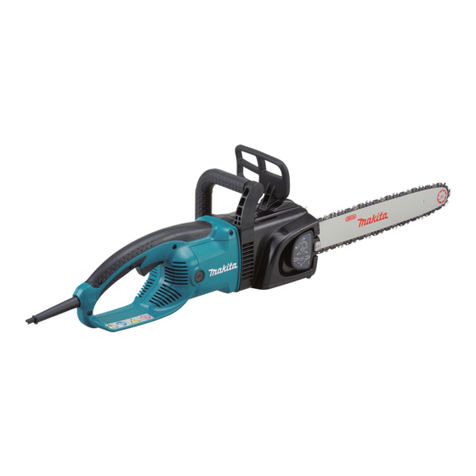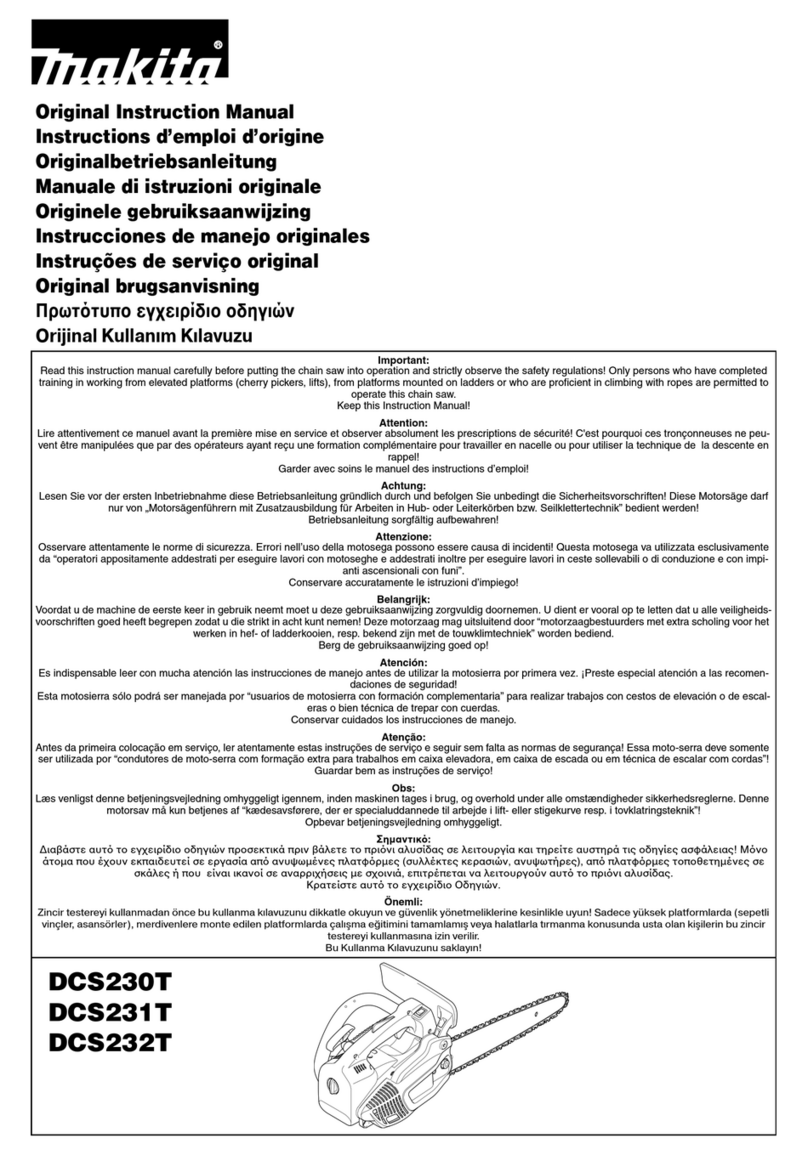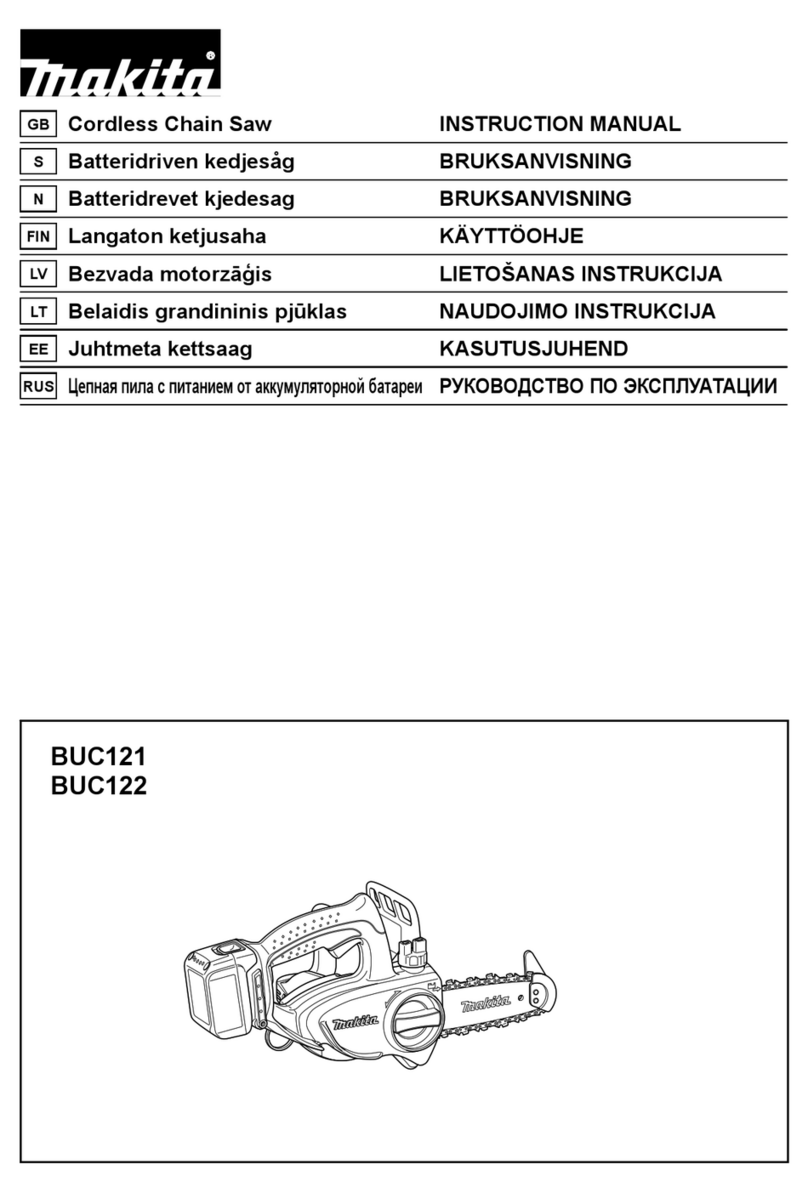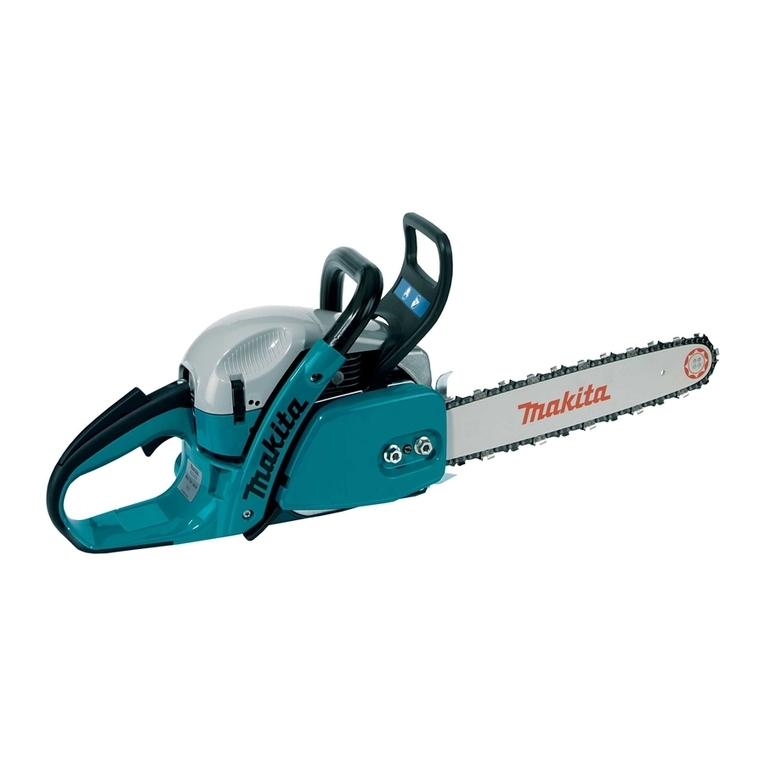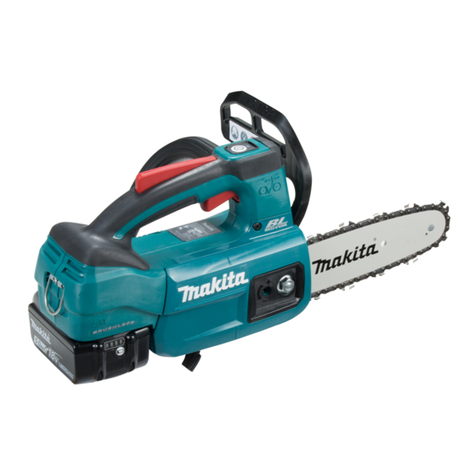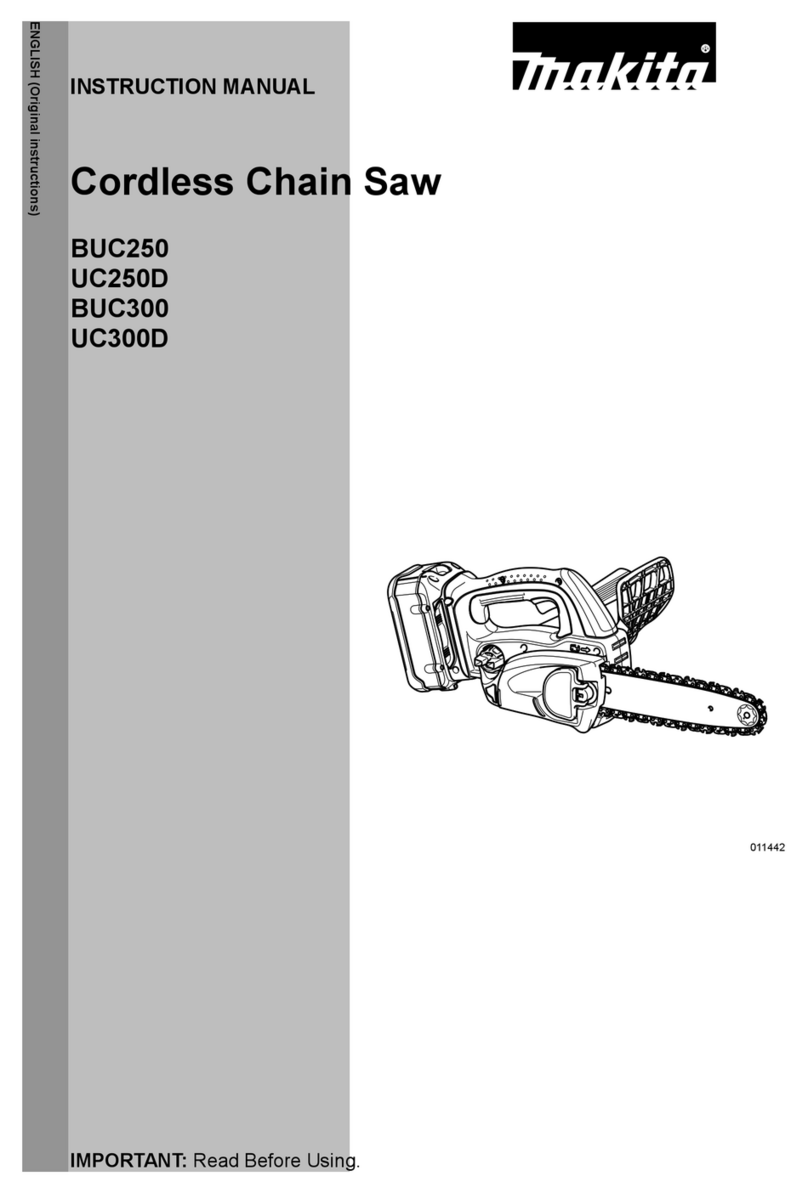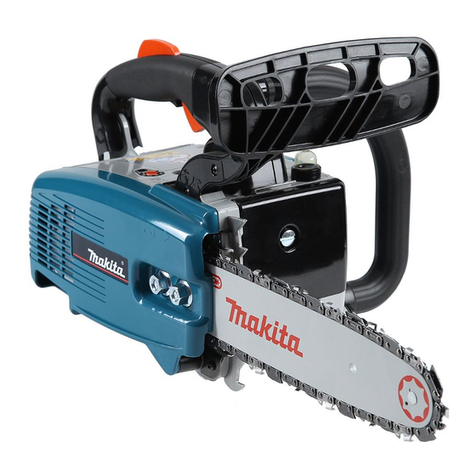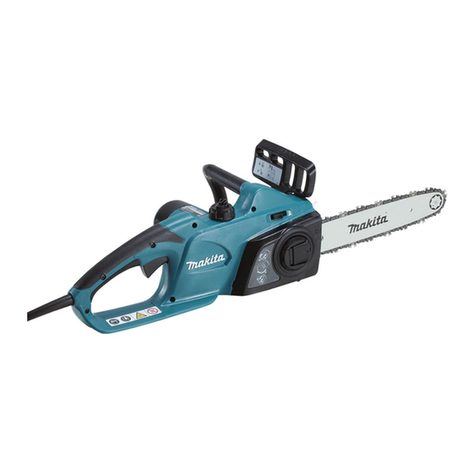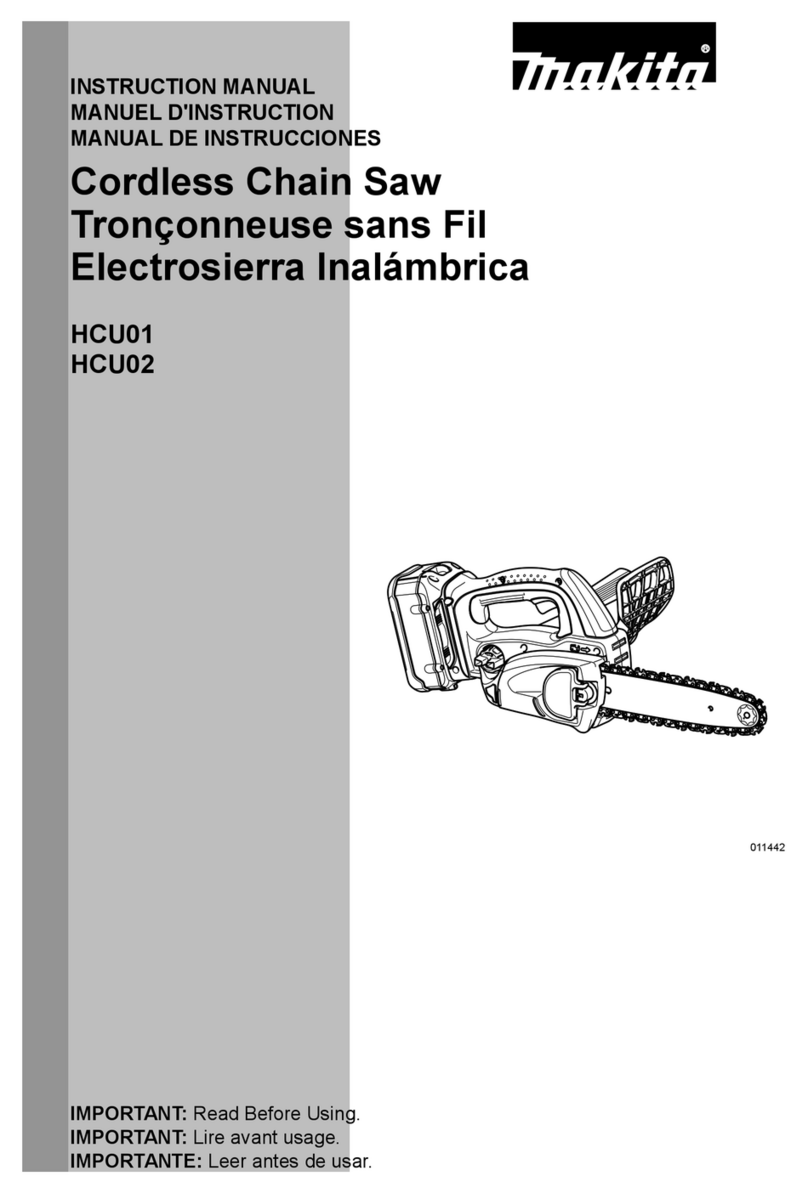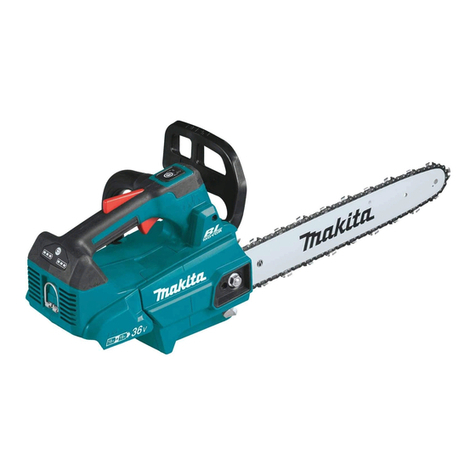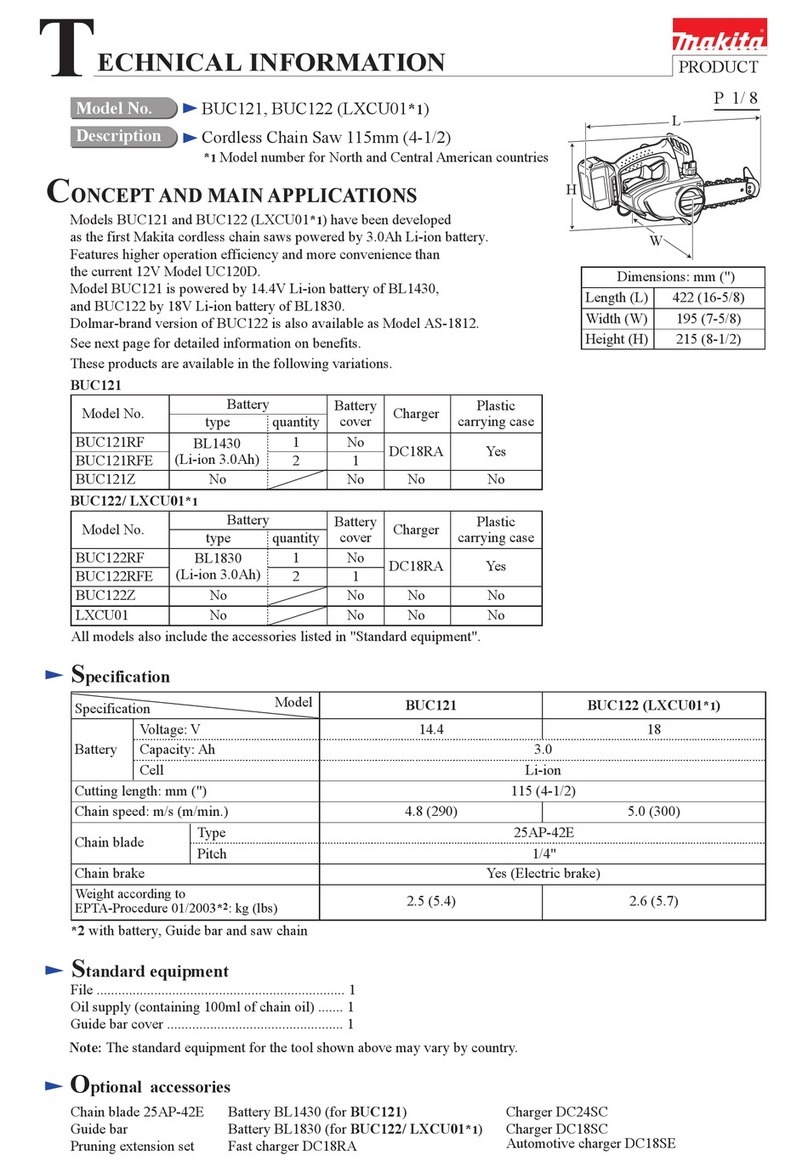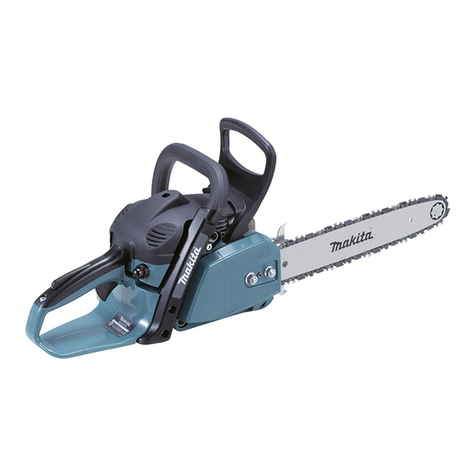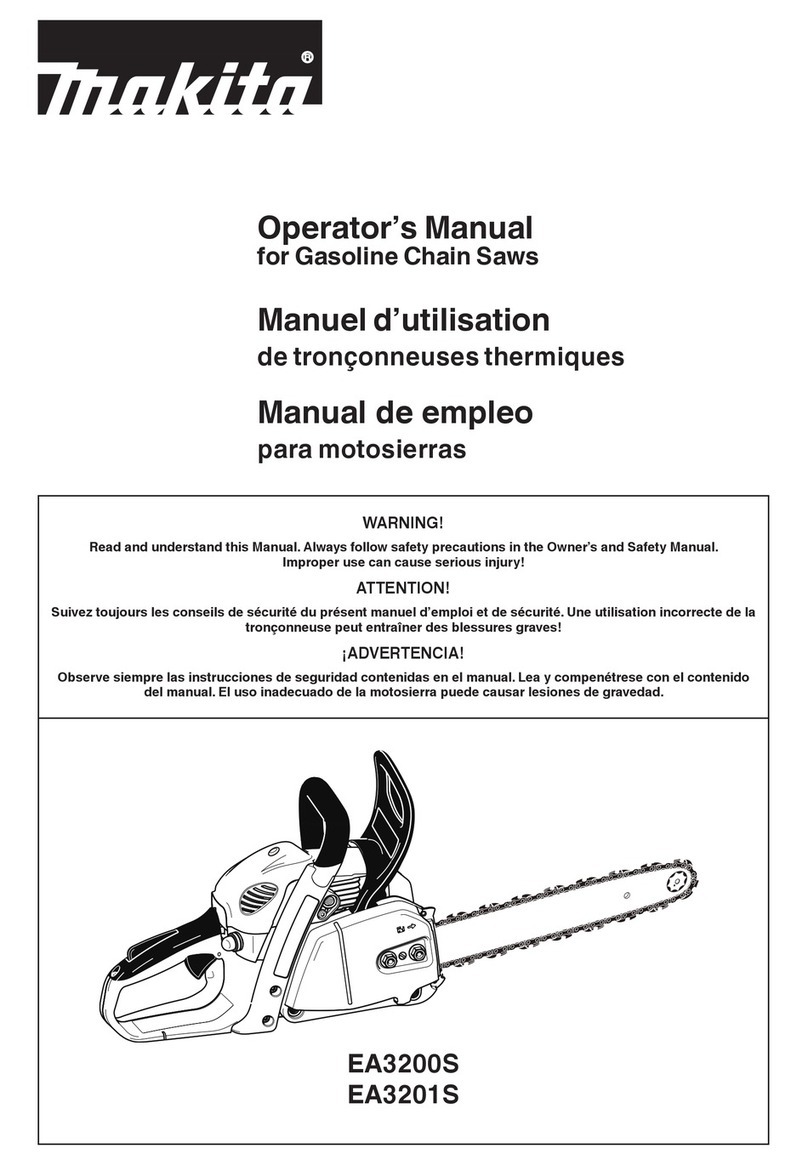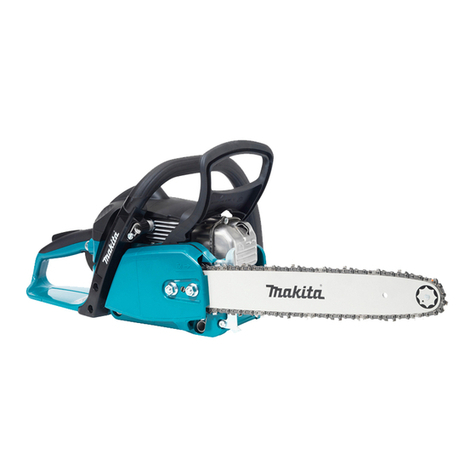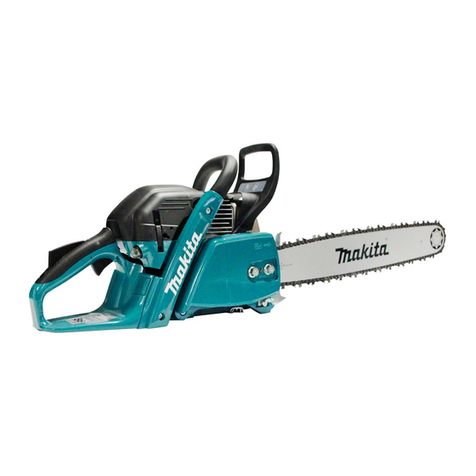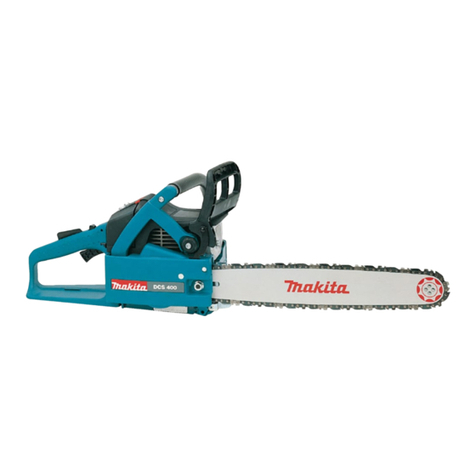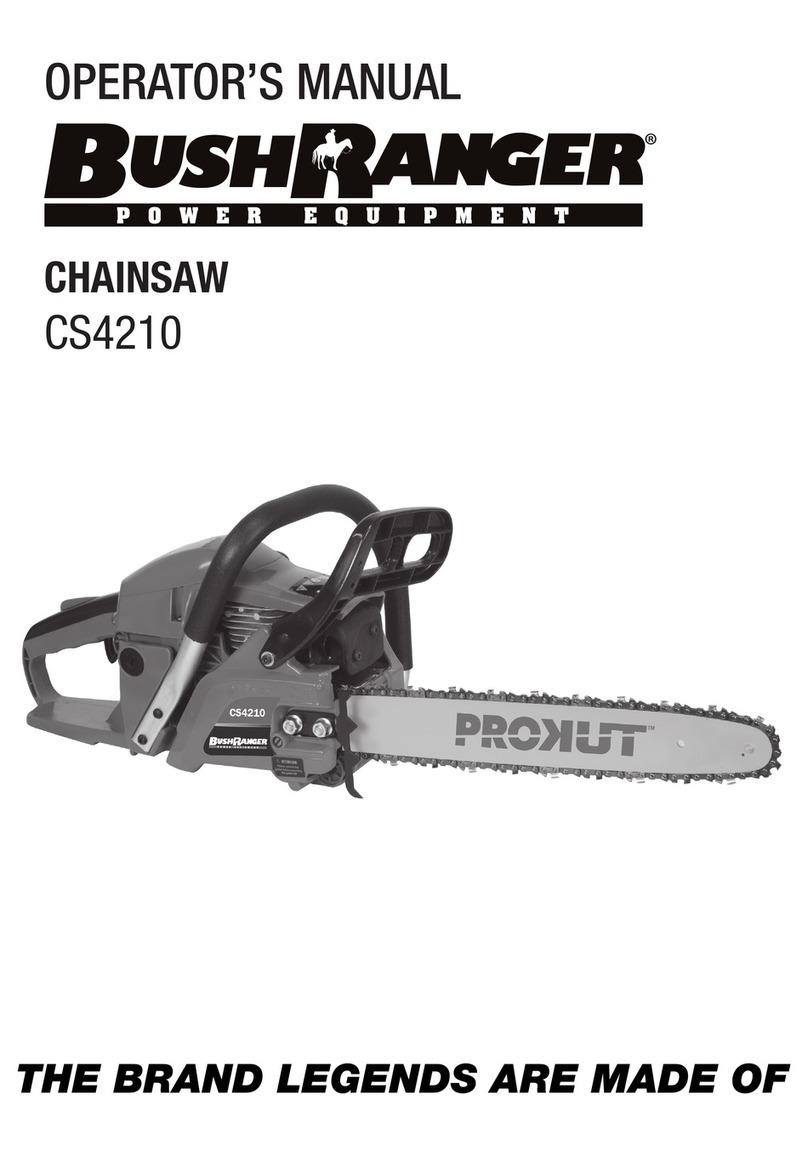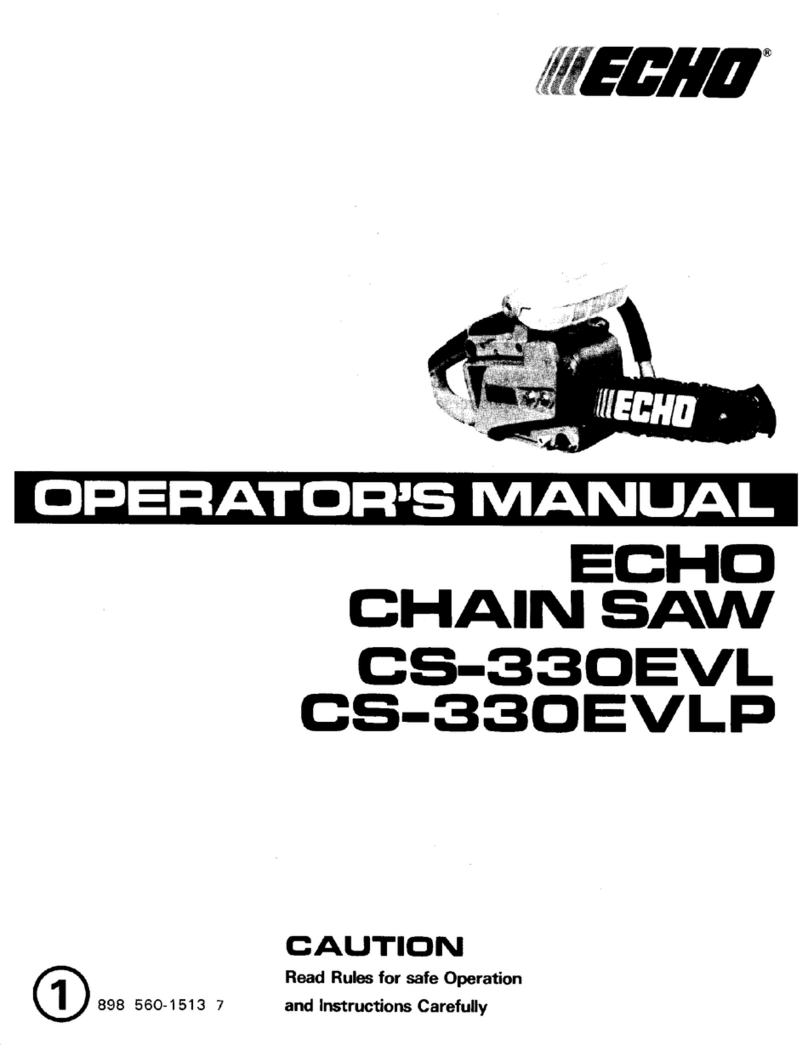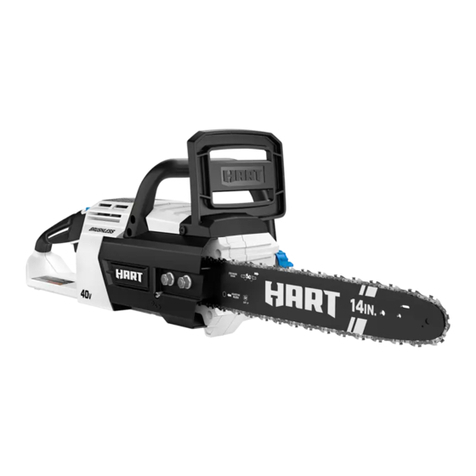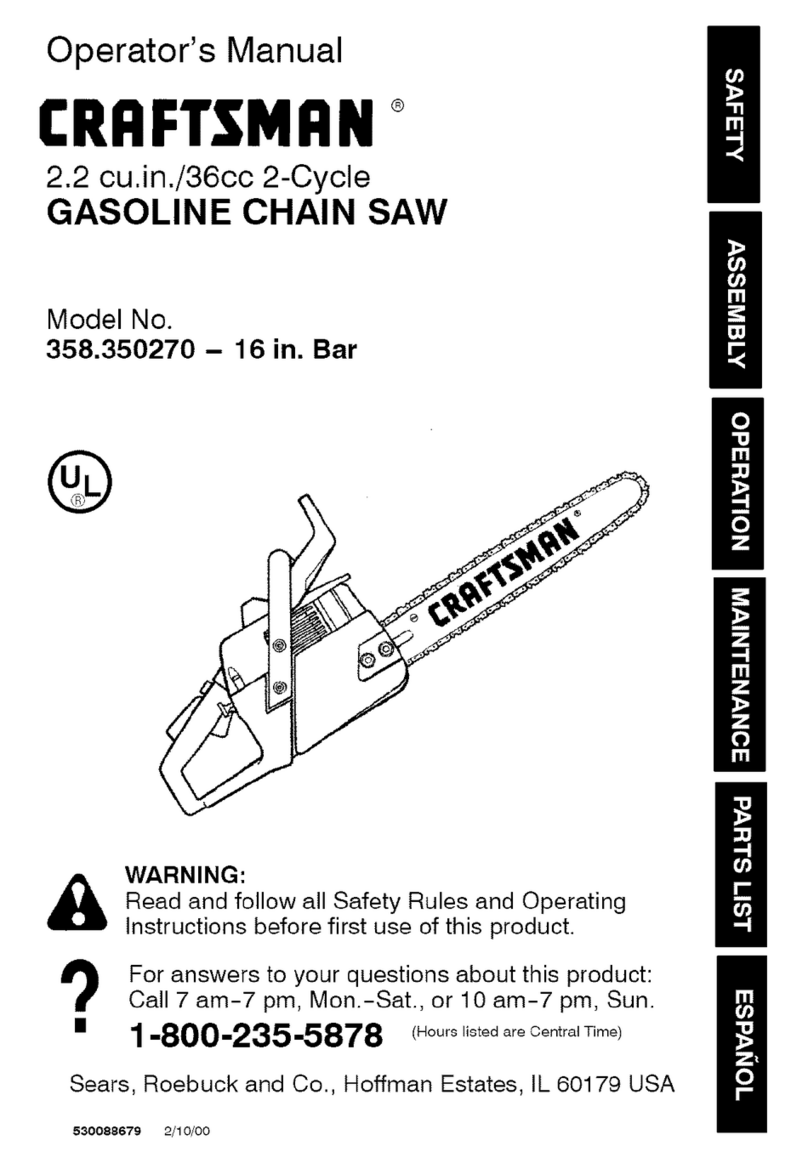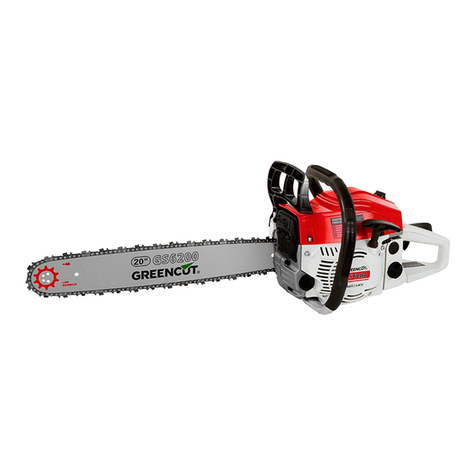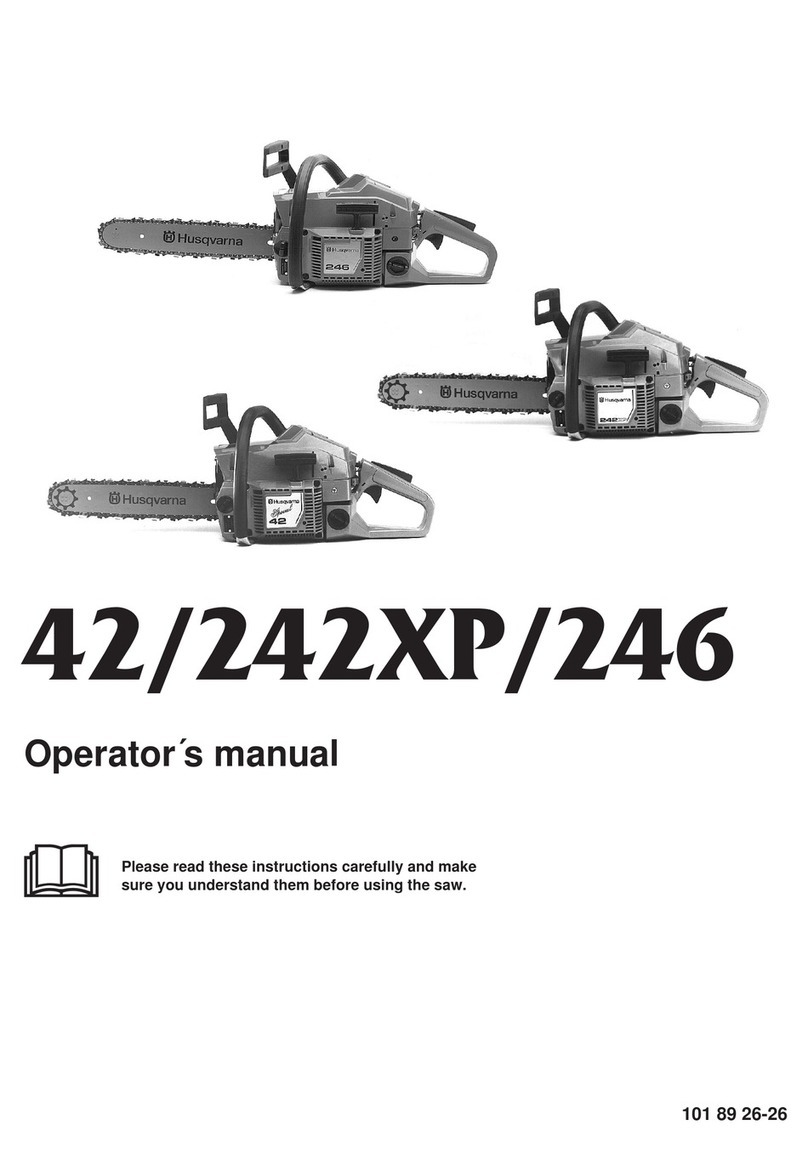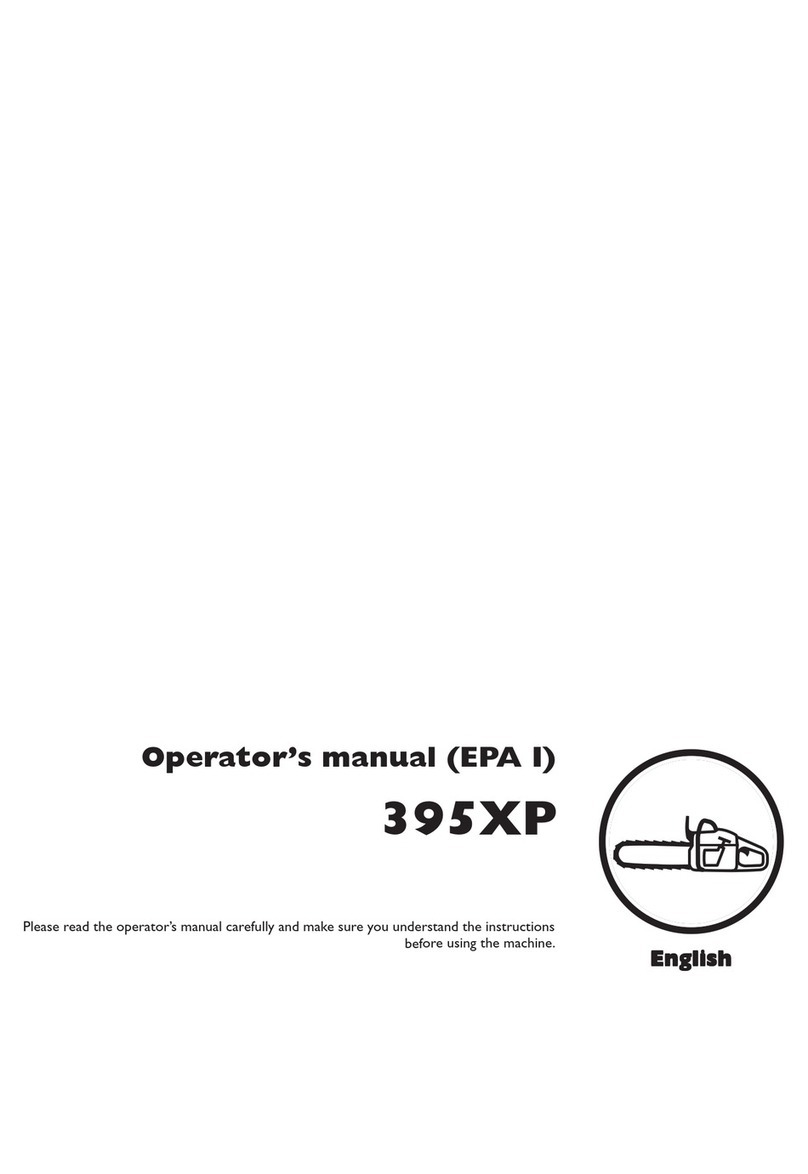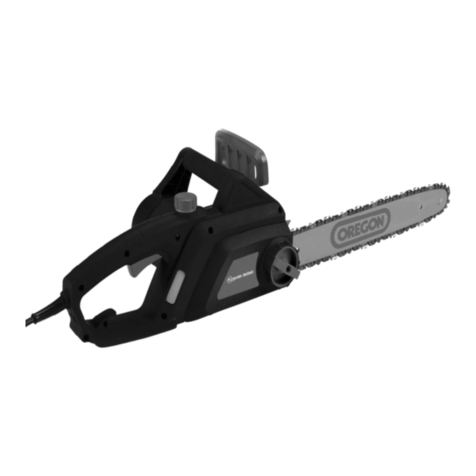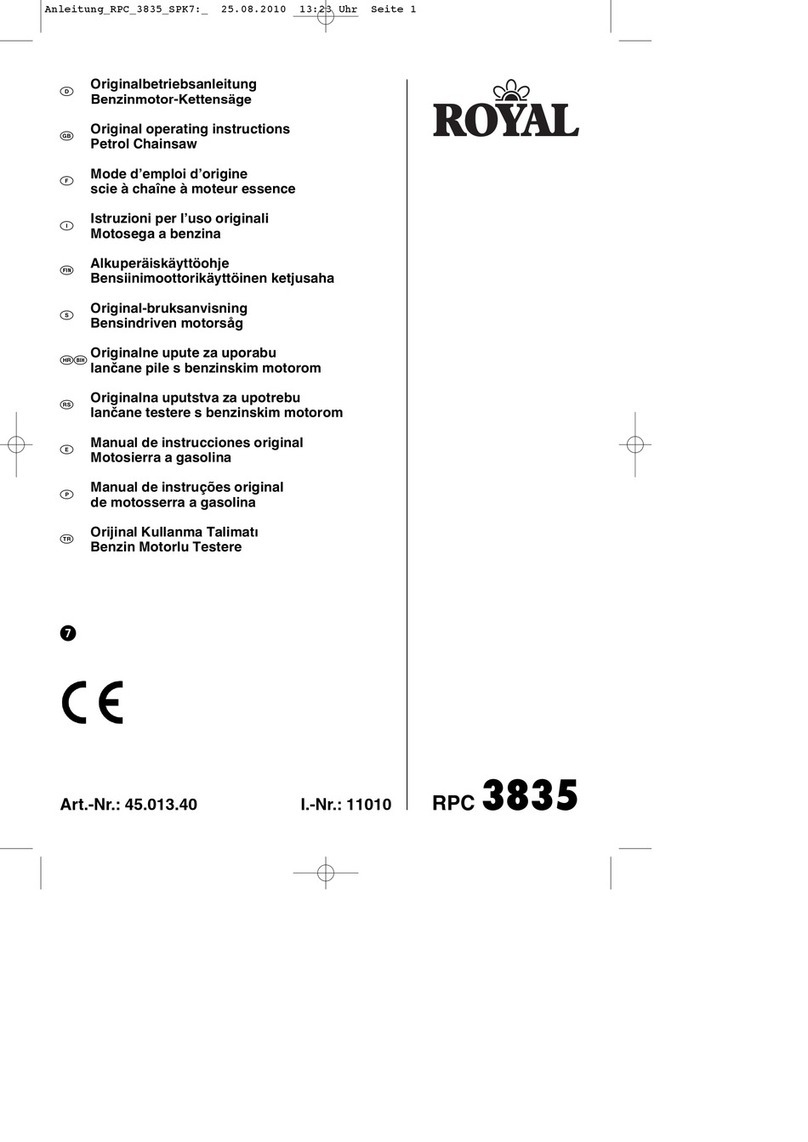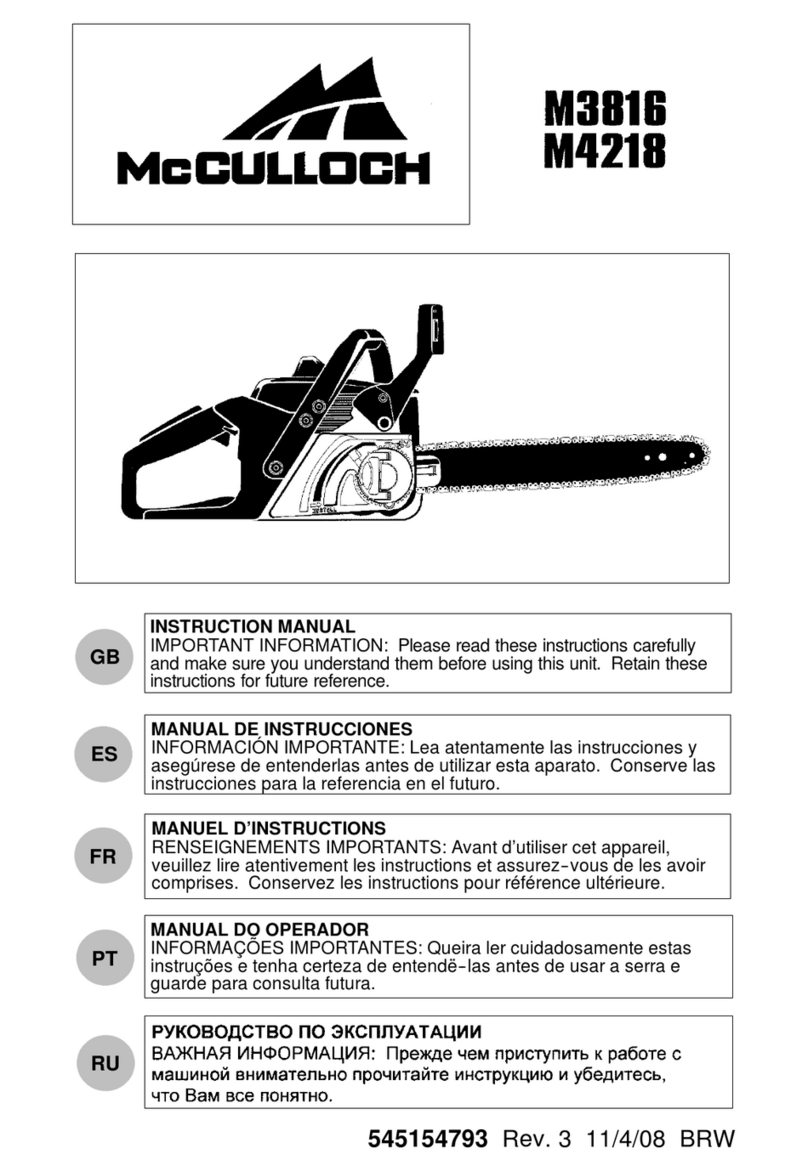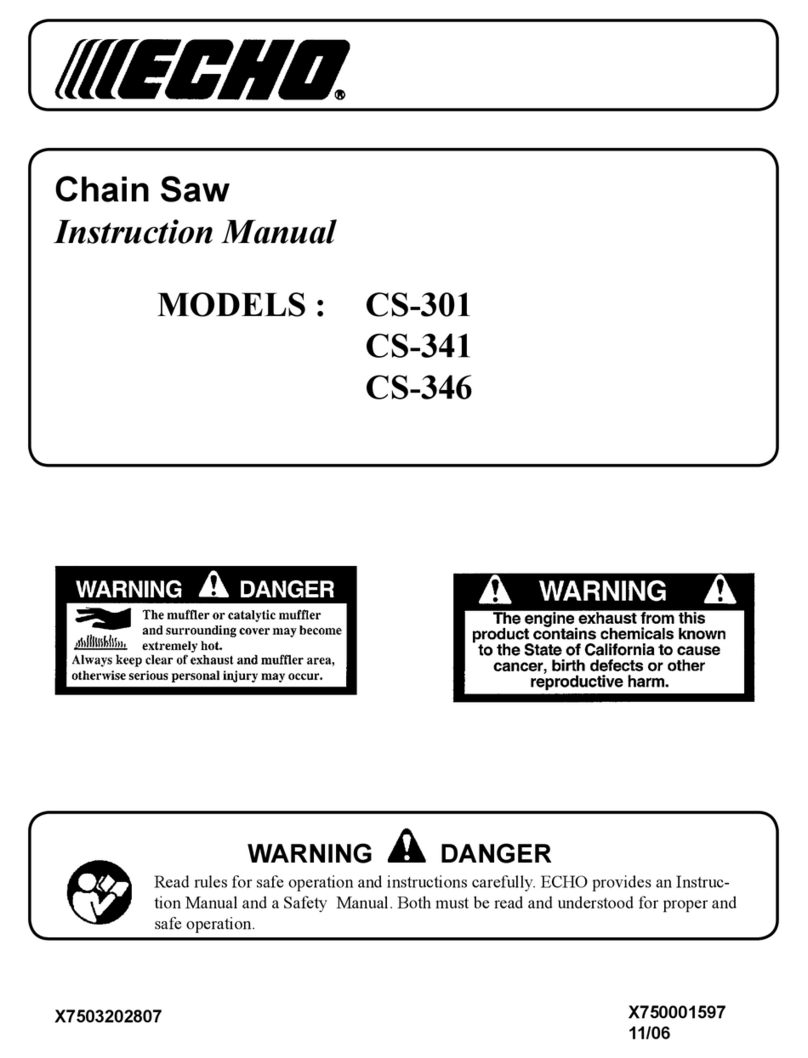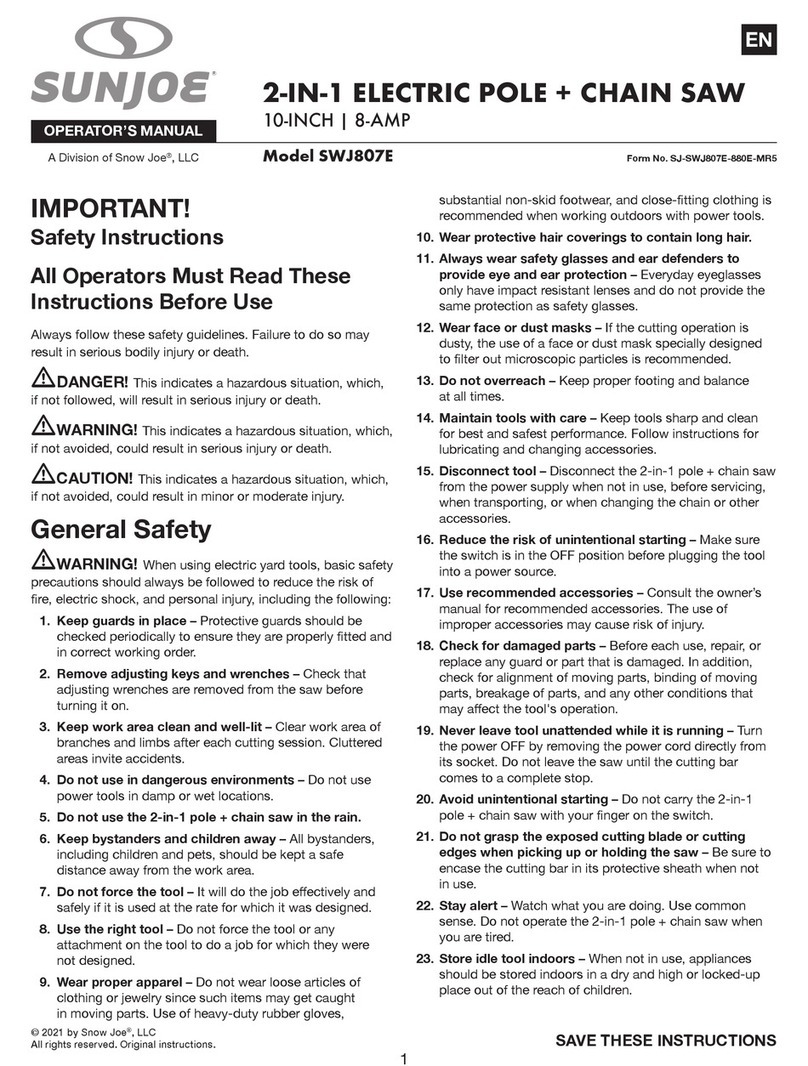
2
Thank you for purchasing a MAKITA prod-
uct!
Congratulations on choosing a MAKITA chain saw! We are
conÞdent that you will be satisÞed with this modern piece of
equipment.
The DCS6400 - 7901H are very handy and robust chain saws
with a new Design.
The automatic chain lubrication with variable-ßow oil pump
and maintenance-free electronic ignition ensure trouble-free
operation, while the hand-saving anti-vibration system and
ergonomic grips and controls make work easier, safer, and
less tiring for the user.
MAKITA chain saws DCS6400 - 7901H are equipped with the
latest safety features and meet all national and international
standards. These featuresinclude: hand guards on bothhandles,
grip throttle lever lock, chain catch, safety saw chain, and chain
brake. The chain brake can be actuated manually, and is also
inertia-actuated automatically in case of kickback.
The following industrial property rights apply: GBM 29616652,
EP 0560201B1.
In order to ensure the proper functioning and performance
of your new chain saw, and to safeguard your own per-
sonal safety, it is imperative that you read this instruction
manual thoroughly before operation. Be especially careful
to observe all safety precautions! Failure to observe these
precautions can lead to severe injury or death!
Packing
Your MAKITA chain saw comes delivered in a protective card-
board box to protect against shipping damage.
Cardboardisabasicrawmaterialandisconsequentlyreuseable
or suitable for recycling (waste paper recycling).
Table of contents Page
Packing ................................................................................ 2
Delivery inventory .............................................................. 3
Symbols ............................................................................... 3
SAFETY PRECAUTIONS
General precautions ....................................................... 4
Protective equipment ...................................................... 4
Fuels / Refuelling ............................................................ 5
Putting into operation ......................................................5
Kickback ......................................................................... 6
Working behavior/Method of working ...........................6-7
Transport and storage .....................................................8
Maintenance ................................................................... 8
First aid ........................................................................... 8
Technical data ..................................................................... 9
Denomination of components ........................................... 9
PUTTING INTO OPERATION
Mounting the guide bar and saw chain .................... 10-11
Tightening the saw chain ......................................... 11-12
Chain brake .................................................................. 12
Fuels ........................................................................13-14
Refuelling ......................................................................14
Checking the chain lubrication ...................................... 15
Adjusting the chain lubrication ...................................... 15
Starting the engine ........................................................ 16
Cold start ....................................................................... 16
Warm start ....................................................................16
Stopping the engine ...................................................... 16
Checking the chain brake .............................................16
Adjusting the carburetor (only for EU-countries) ............ 17
Adjusting the carburetor (only for not EU-countries) ...... 18
Working in summer / winter ............................................ 19
Handle heating (only „H“-models)........................................19
MAINTENANCE
Sharpening the saw chain .......................................20-21
Cleaning the brake band and sprocket interior ............. 22
Cleaning the guide bar .................................................23
Replacing the saw chain ............................................... 23
Replacing the suction head .........................................23
Cleaning the air Þlter and the Þlter hood ......................24
Replacing the spark plug ..............................................25
Checking the ignition spark ........................................... 25
Checking the mufßer screws ......................................... 25
Replacing the starter cable / Replacing the return spring 26
Mounting the fan housing .............................................27
Cleaning the cylinder area ............................................ 27
Replacing/cleaning the spark arrester screen ..............27
Instructions for periodic maintenance ........................... 28
Service, spare parts and guarantee ...........................28-29
Trouble shooting .............................................................. 29
Extract from spare parts list ........................................... 30
Accessories ..................................................................30
EU conformity declaration ...............................................31

